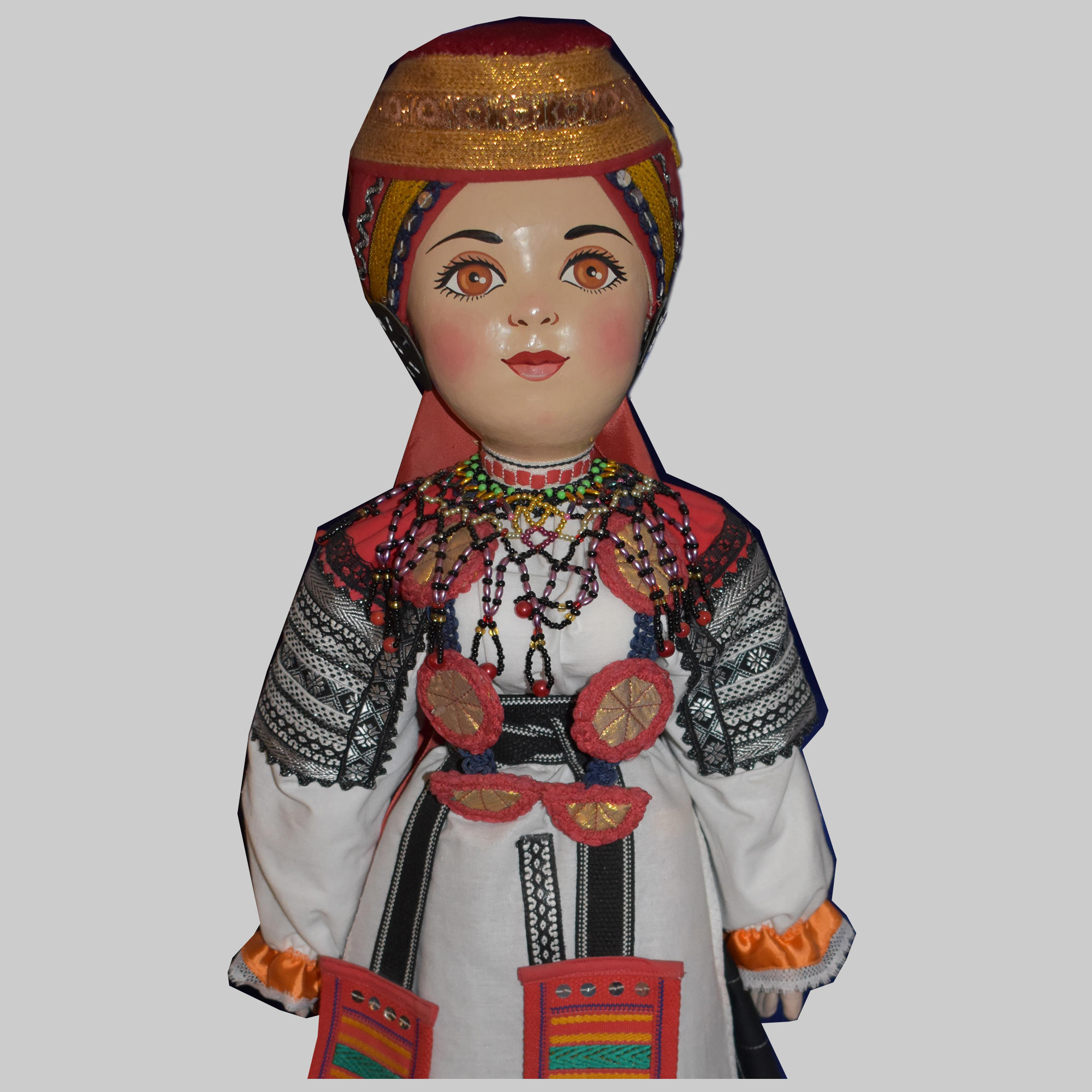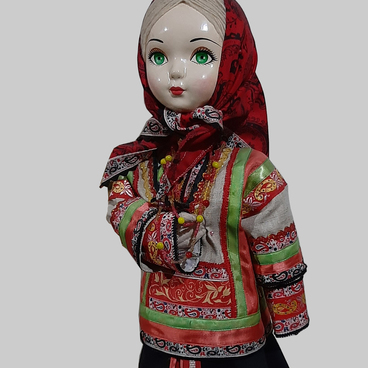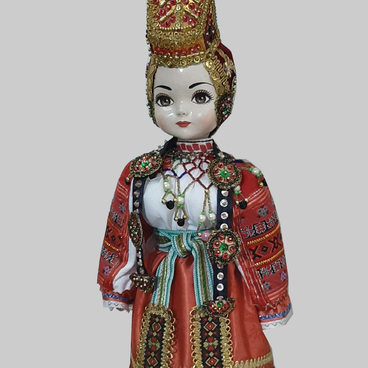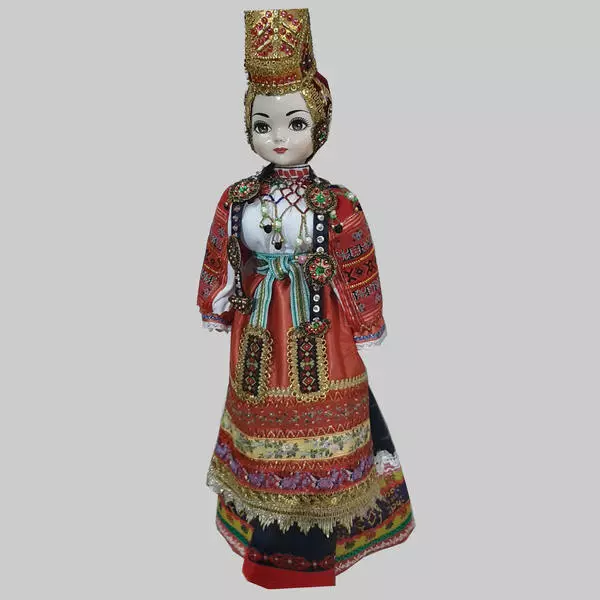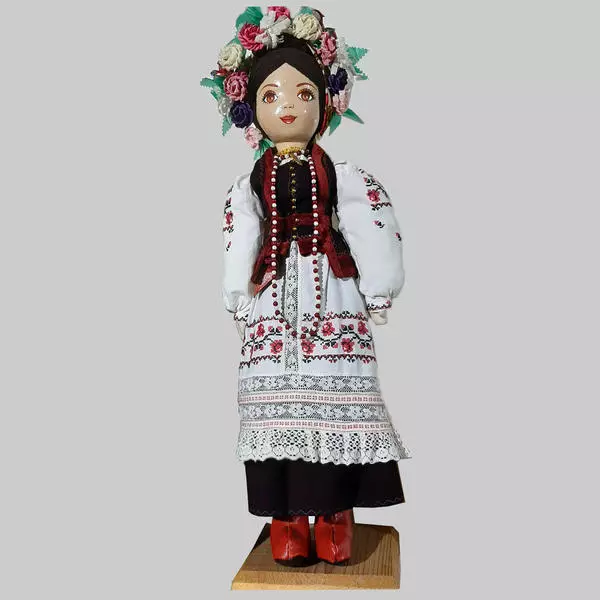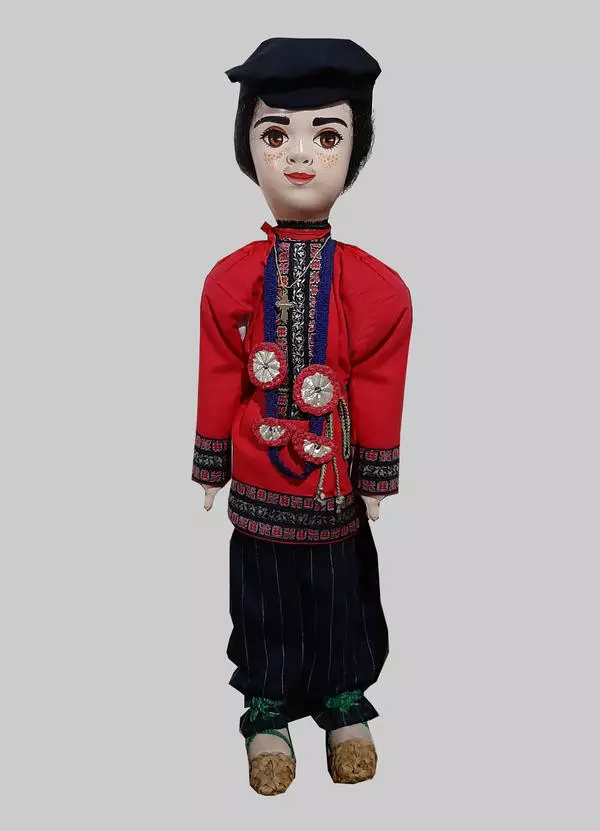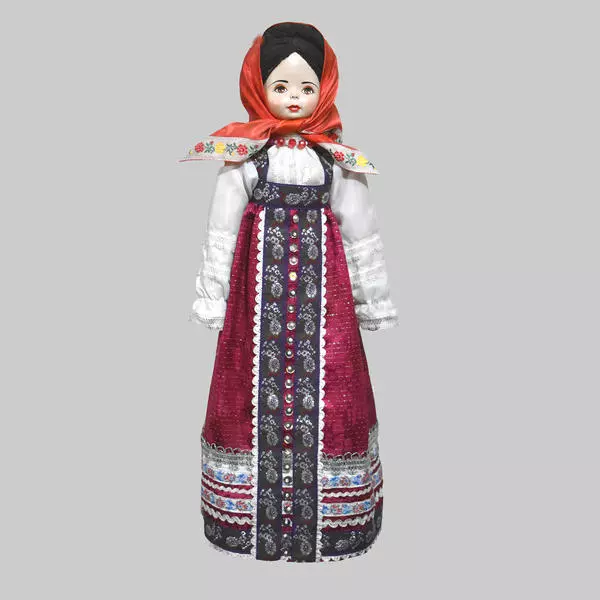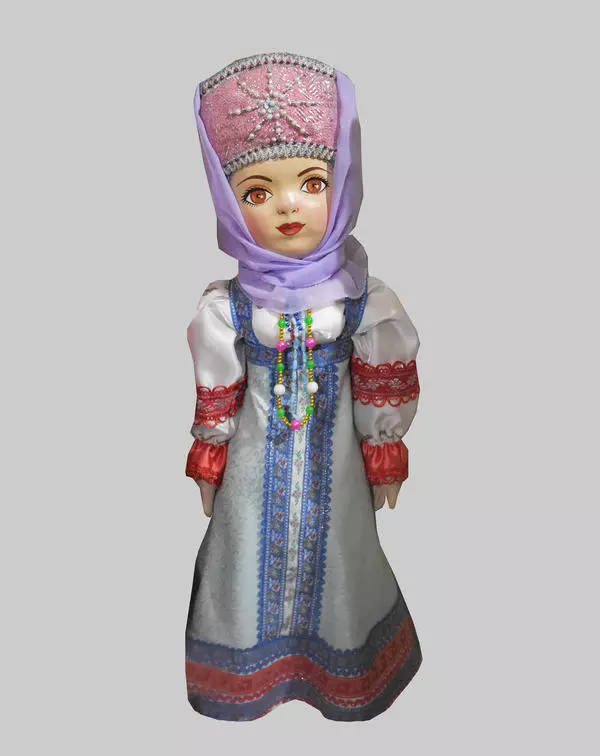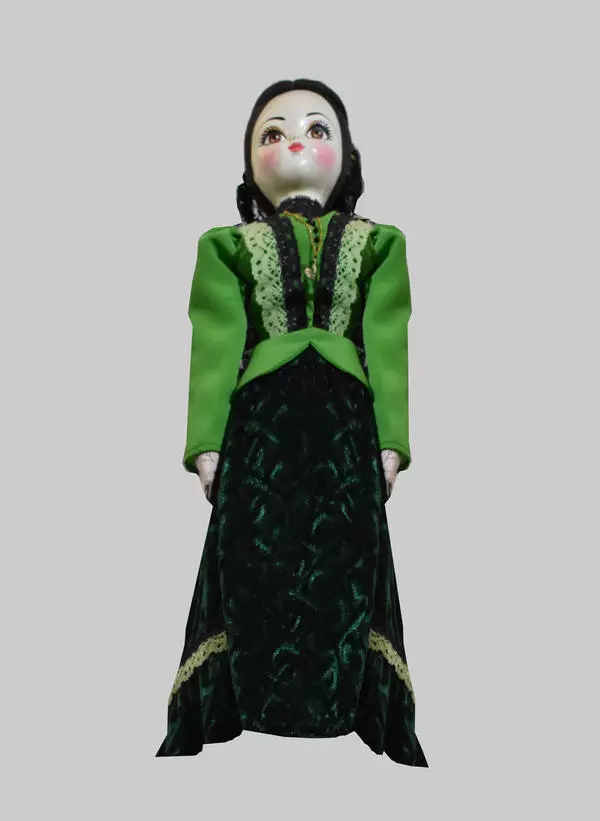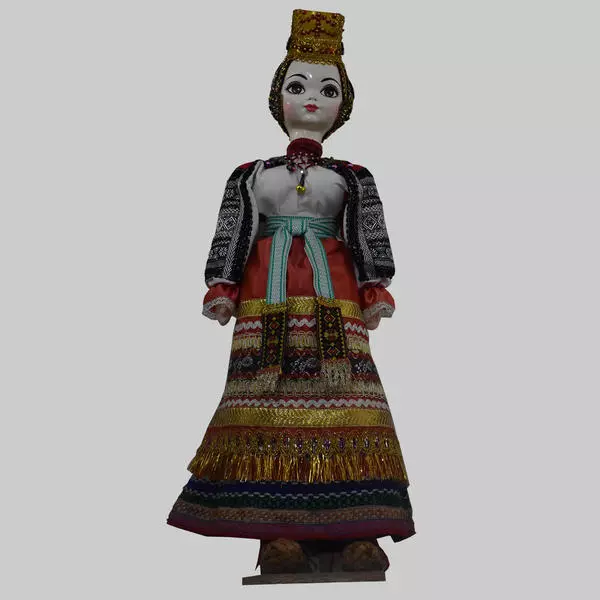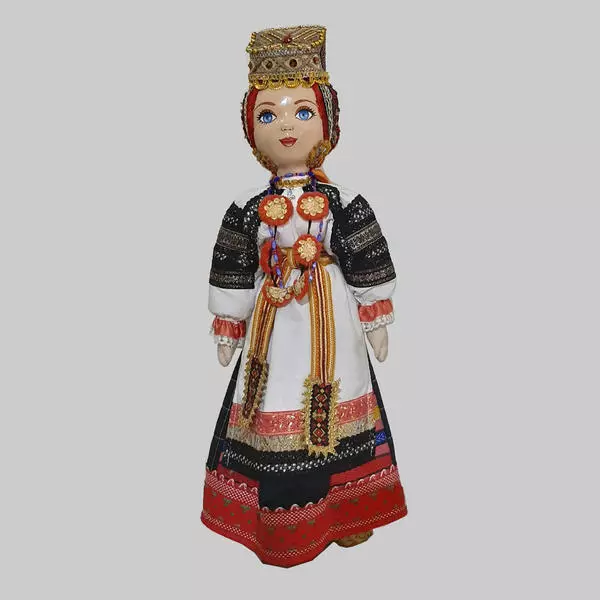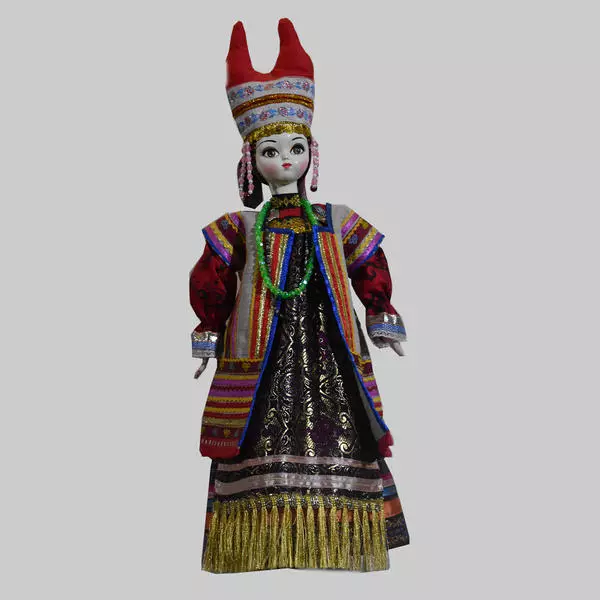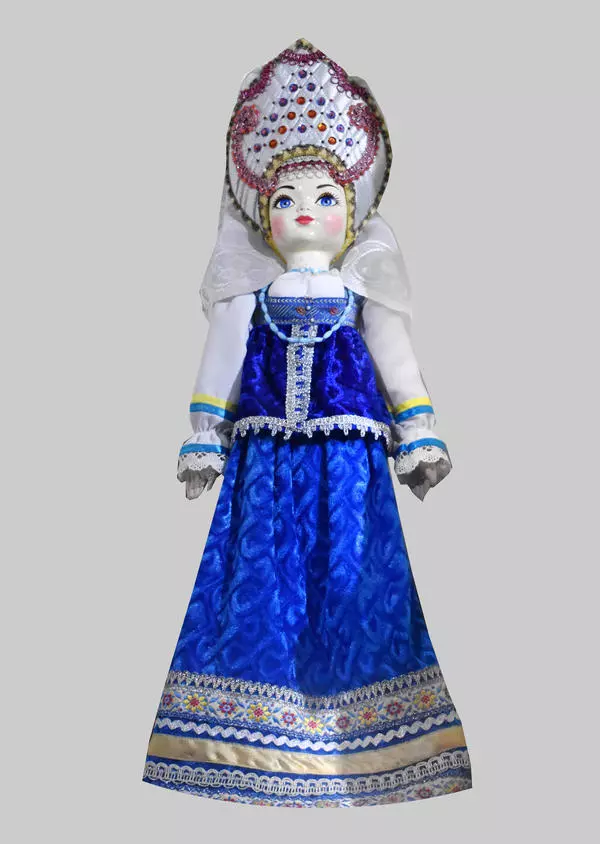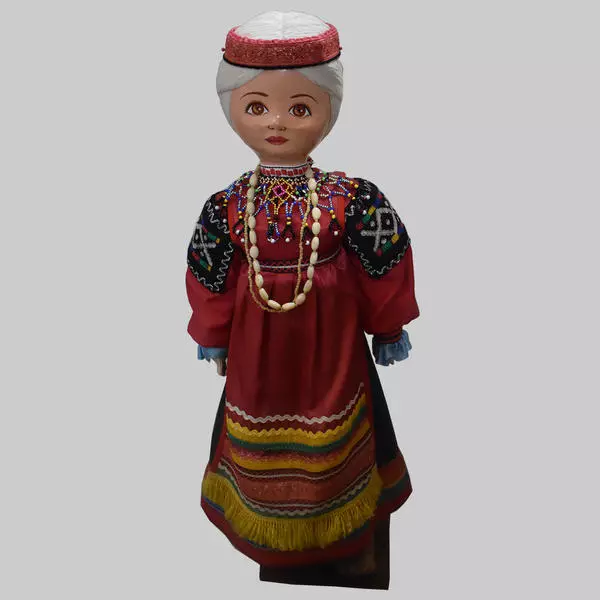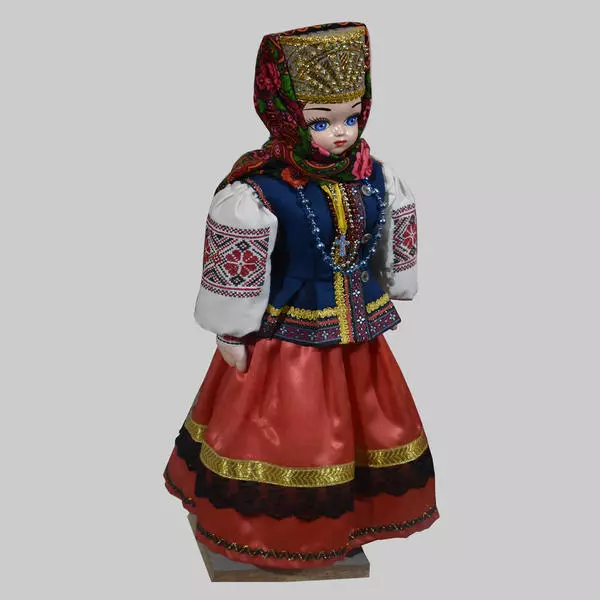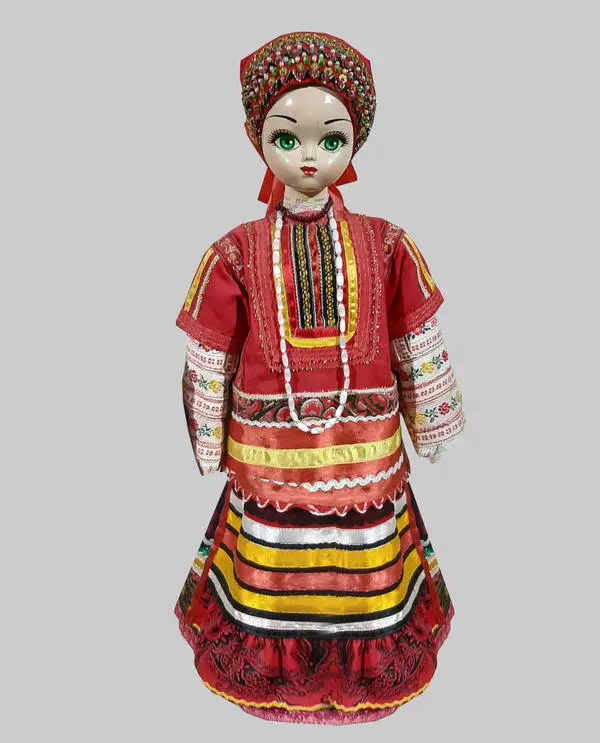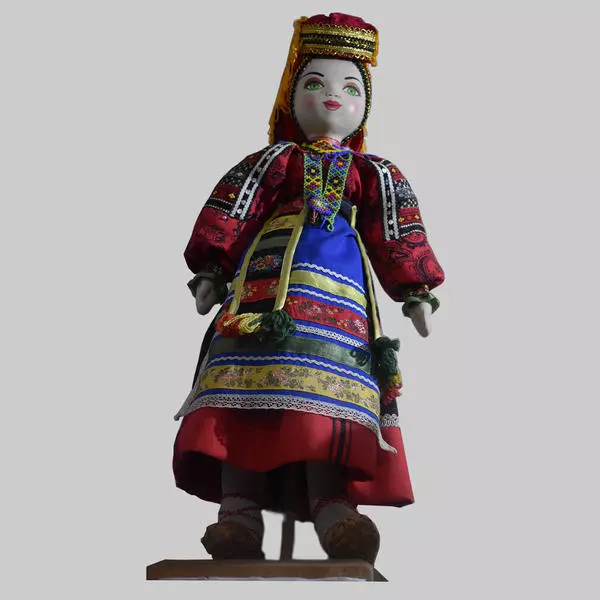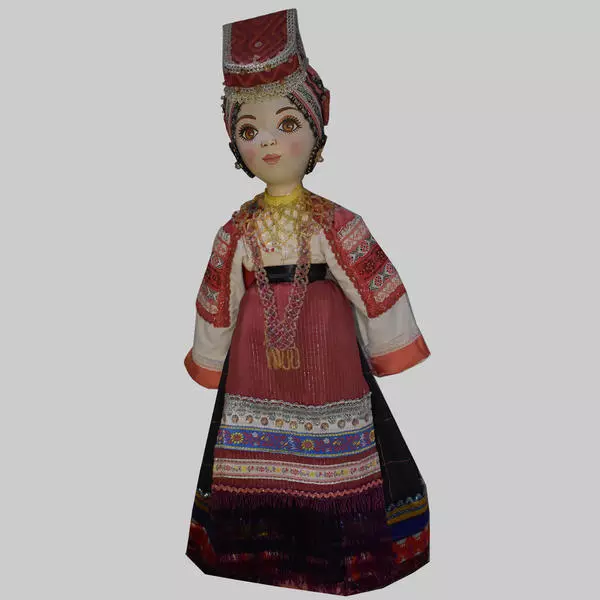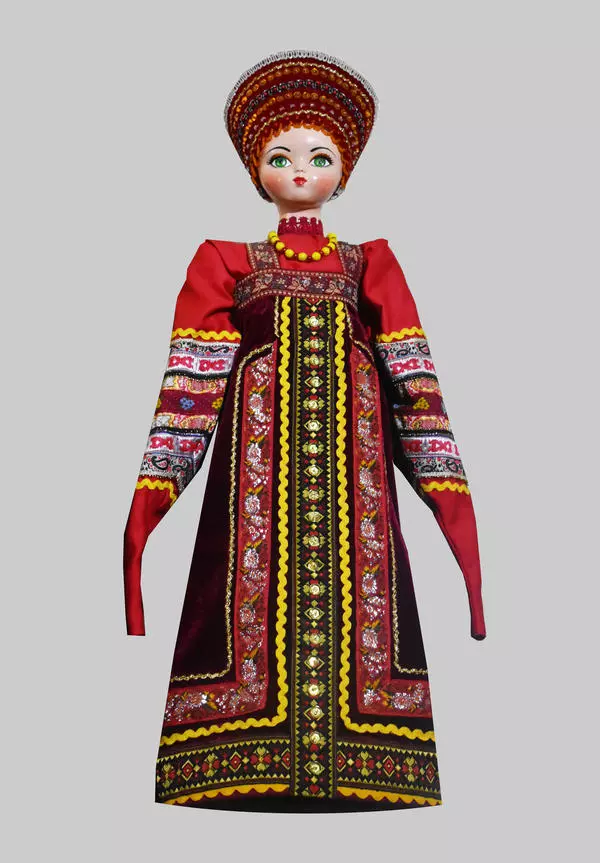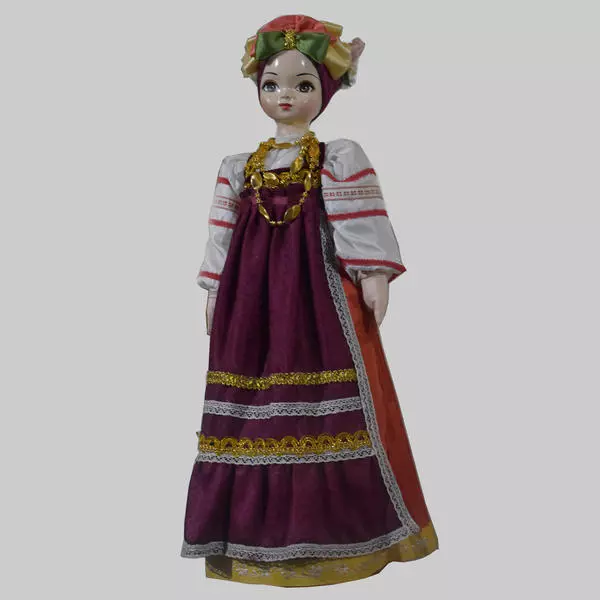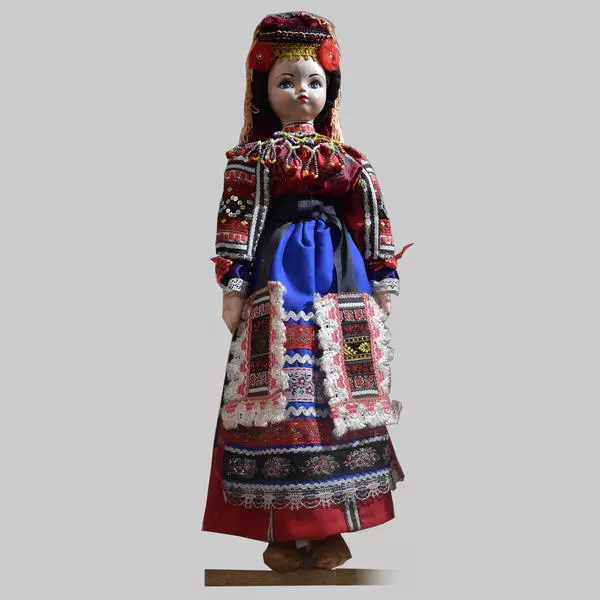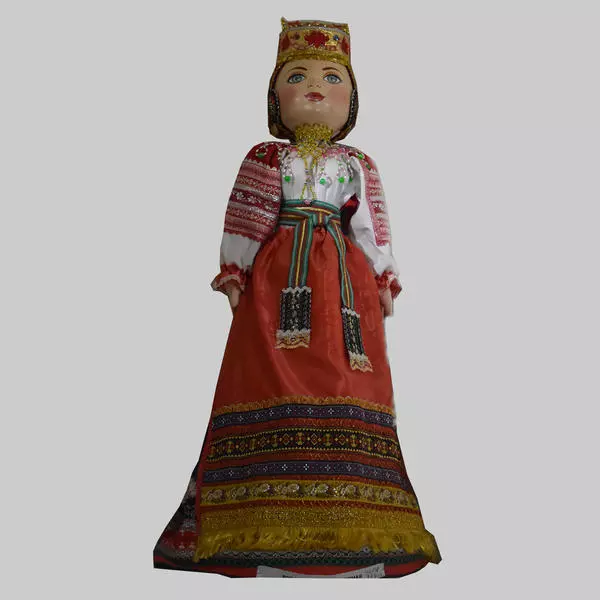The festive costume on this doll is representative of a traditional gown worn by Voronezh-Belgorod border zone inhabitants, although it is displayed in the museum as clothing from the Russian Trostyanka village in the Ostrogozhsk district.
A woman’s age is encoded into the ornaments on a skirt (ponyova) and a white shirt, with a decorative pattern corresponding to a specific age group. The same approach was applied to the shirt’s embroidery pattern: one design was intended for weddings, another for festive days, and still another for Sunday church services.
The doll’s black-checkered ponyova contains a proshiva (insertion) of smooth, black fabric. Meanwhile, the skirt is decorated with carpet embroidery. Although both festive ponyovas and everyday clothing were embroidered on the back, sides, and bottom, the festive variants featured much more complex threading and embroidery patterns. A person’s village could also be identified by the ponyova’s colour palette.
A shirt, sometimes called a stanushka (from the Russian word stan, meaning “figure”) always served as the basis for a female costume. Shirts were originally sewn from rough, homemade sheets of flax or hemp, but later gave way to more delicate fabric purchased from travelling merchants. A white sheet would be embroidered delicately into geometric shapes using black thread.
A woman’s age is encoded into the ornaments on a skirt (ponyova) and a white shirt, with a decorative pattern corresponding to a specific age group. The same approach was applied to the shirt’s embroidery pattern: one design was intended for weddings, another for festive days, and still another for Sunday church services.
The doll’s black-checkered ponyova contains a proshiva (insertion) of smooth, black fabric. Meanwhile, the skirt is decorated with carpet embroidery. Although both festive ponyovas and everyday clothing were embroidered on the back, sides, and bottom, the festive variants featured much more complex threading and embroidery patterns. A person’s village could also be identified by the ponyova’s colour palette.
Nearly a dozen different shirt designs were popular. Some featured coloured dots, or peretkankas, embroidered on the collar. Others were decorated with multi-coloured poliki weaving at the base, with a similar pattern woven into the back and shoulder line.
While white was generally used as the main colour, red shirts were also common. Festive fabrics were often whitewashed with ashes to make them brighter; however, this was normally unnecessary for the sheets used to make everyday clothes.
Festive and regular shirt styles also differed by sleeve length, with the sleeves on a commonplace durochka (an unkind name meaning “stupid girl”) stopping just below the elbow. This was a practical design, which allowed women to go about their housework unencumbered. For example, mixing dough, tending to animals, or working in the vegetable garden. Finally, long-sleeved and reinforced bloshnitsy could be worn day or night without an underskirt.
Costumes worn in this region were often punctuated by a gribatka, or necklace, made of interconnected circles of gold or silver thread. This design symbolised the Sun’s restless journey across the sky and was worn by men, women, and young girls. Gribatkas differed by shape, colour, and makhra, or fringe length. They are still produced today, using modern thread and other materials.
